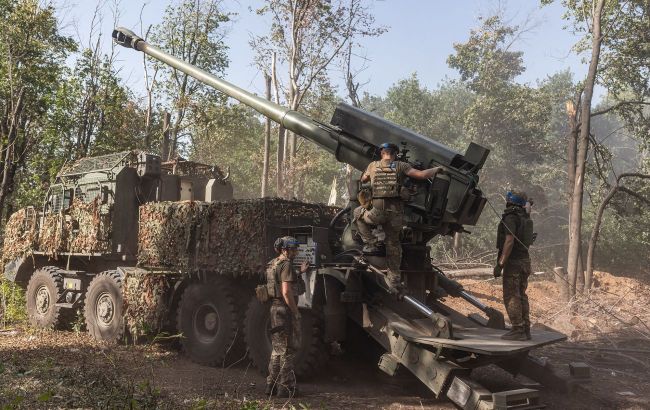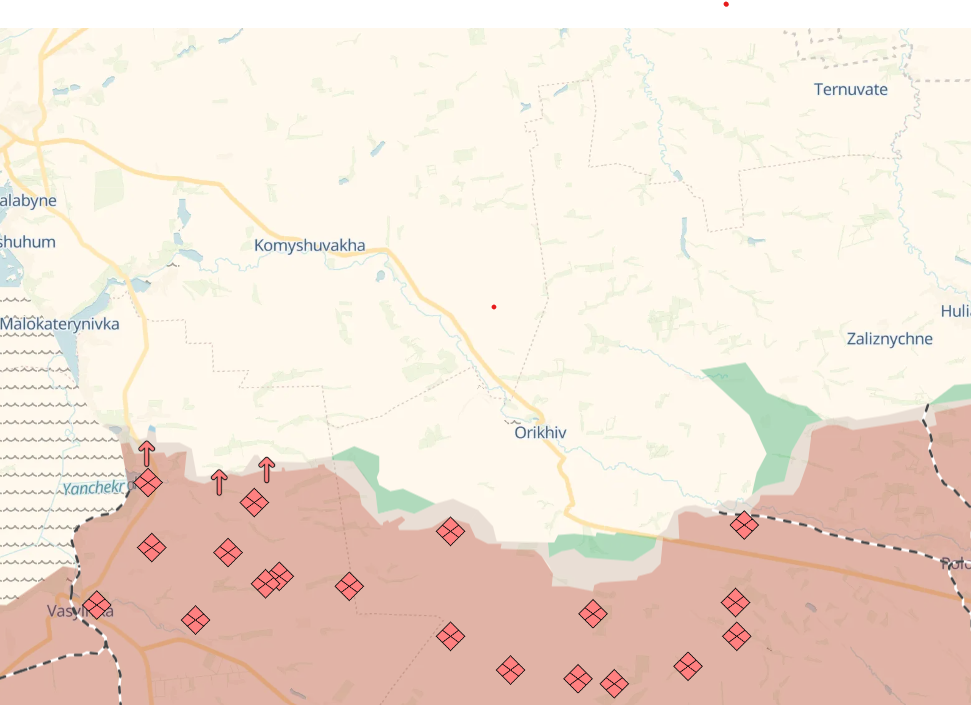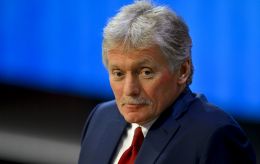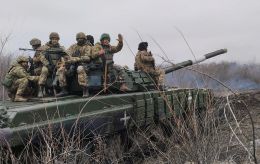Russia's fall offensive: Where enemy may strike and possible dangers for Ukraine
 Resilience of Ukrainian troops could disrupt the Kremlin's plans for the fall (photo: GettyImages)
Resilience of Ukrainian troops could disrupt the Kremlin's plans for the fall (photo: GettyImages)
Russia is launching its autumn campaign on the frontline. What are the goals and the true purpose of this offensive, and what risks exist for Ukraine's Defense Forces, read in the RBC-Ukraine article.
Key questions
- What did the Russian army achieve during the summer offensive?
- Where do Russian forces plan to attack this fall?
- What are the risks for the Donetsk region?
- What threats exist for other regions?
- Will Moscow plan to attack Ukraine's energy system again?
- What is Putin's strategy?
Amid US, Ukrainian, and European efforts to force Putin toward peace, Russia's army is launching an autumn offensive at the front. Moscow's summer campaign, despite some tactical gains, ended in strategic failure. And whatever bravado the Russian General Staff might broadcast about its successes, in reality, the goals set for June, July, and August were never achieved.
The Kremlin believed that heavy pressure and advances on the battlefield during the summer months would force Ukraine to accept its capitulation terms - now it wants to repeat the same scenario this fall. For this, Moscow carried out a large-scale regrouping of forces and revised its priority directions on the frontline.
Russia's strategic failure in summer
Among the main objectives set by the Russian army for the summer of 2025 were the capture of Pokrovsk and Kostyantynivka, the creation of a so-called buffer zone in Sumy and Kharkiv regions, as well as advances into the Dnipropetrovsk region.
Of all this, the enemy only managed to reach the administrative border of Dnipropetrovsk region, taking control of a few villages, and to expand its zone of control in the border areas of Sumy region, where it had advanced back in spring. Already in July, however, its offensive there was stopped, after which Ukraine's Defense Forces moved to counter-offensive actions, liberating a number of settlements.
Pokrovsk, after a year of Russian pressure, is still standing, though from the southwestern outskirts, the enemy continues trying to infiltrate into the city in small groups. Despite Gerasimov's (Chief of the General Staff of the Russian Armed Forces) fantasy maps, the enemy has still not approached Kostyantynivka.
 Ukraine's Defense Forces managed to hold back Russia’s summer offensive (GettyImages)
Ukraine's Defense Forces managed to hold back Russia’s summer offensive (GettyImages)
Russia's summer campaign had the same features as the previous ones, notes Grace Mappes, ISW's Russia analyst: slow, gradual advances that lagged far behind the pace of modern mechanized warfare and were accompanied by disproportionately high losses.
"Russian forces' most notable gain was nearly completing the seizure of Chasiv Yar after 14 months of fighting through the city. Russian forces have leaned into infiltration tactics, leveraging motorcycles and anti-thermal blankets to penetrate Ukrainian lines and will likely continue these efforts into the fall. Russian forces have struggled to leverage infiltration tactics into enduring positions, such as near Dobropillya," the ISW expert told RBC-Ukraine.
Ukrainian military denies full Russian occupation of Chasiv Yar, as well as Toretsk. According to the OSINT project DeepState maps, three neighborhoods of Chasiv Yar remain under Ukraine's Defense Forces control, while a small northwestern part of Toretsk is marked as a gray zone.
Overall, according to the Atlantic Council, during the summer campaign, Moscow captured only about 0.3% of Ukraine's territory. This cost them 30–35 thousand killed and wounded every month.
Target number one
One of Russia's priorities for the autumn campaign will remain advances in the Donetsk region. ISW predicts the enemy will focus primarily on seizing Pokrovsk and Kostyantynivka and on creating conditions for battles against Ukraine's so-called "fortress belt" in Donbas-Sloviansk, Druzhkivka, and Kramatorsk.
"The Russian military command reportedly redeployed relatively "elite" naval infantry and airborne (VDV) forces to Donetsk Oblast from northern Sumy Oblast and the Kherson direction. These redeployments strongly suggest that the Russian Fall 2025 offensive will focus on efforts to seize the remainder of Donetsk Oblast, particularly in the Dobropillya, Pokrovsk, and Kostyantynivka areas," says Mapes.
A Defense Forces insider told RBC-Ukraine that in the coming weeks, they expect intensified Russian pressure in the area of their so-called breakthrough near Dobropillya. This is a sector north of Pokrovsk, where in mid-August several small Russian groups managed to advance 10 kilometers behind Ukrainian lines.
Over the following weeks, Ukrainian troops managed to stabilize the situation there and partially clear the enemy's "breakthrough." However, the Russian army sees this area as advantageous both for encircling Pokrovsk and simultaneously advancing toward the Kramatorsk–Kostyantynivka agglomeration.
 DeepState map
DeepState map
Sources interviewed by RBC-Ukraine assess Russia's chances of capturing Pokrovsk this year differently. One believes Ukraine's Defense Forces will be able to hold the city. Another sees a risk of losing control of Pokrovsk in the coming months. ISW also points to such a risk.
"Russian forces have expanded their advances around Pokrovsk, threatening Ukraine's positions in the town. Russian forces' gains near Pokrovsk in the summer may force Ukraine to withdraw from Pokrovsk in the fall, though Russian forces' rate of advance remains slow, and Russia is far behind schedule for seizing Pokrovsk, which was the objective of Russia's Fall 2024 offensive. Russian forces may finally succeed in seizing Pokrovsk in Fall 2025 (an effort Russian forces have been working on since October 2023), though it remains unclear whether Ukrainian forces will succeed in denying this objective for several more months," explains the ISW analyst.
In Mapes' assessment, if Russian combat capability remains at its current level, they will likely be able to advance toward Kostyantynivka and Druzhkivka, but are unlikely to fully capture them by year's end. Taking Ukraine's "fortress belt" in Donbas will clearly take more than a year, ISW believes.
Zones of tension
In addition to attempts to reach Pokrovsk and the Kramatorsk–Kostyantynivka agglomeration, sources believe the enemy will also push on the Lyman direction. In August, the enemy managed to advance in the Serebryansky Forest area and along both banks of the Zherebets River. The Lyman direction is Russia's key to expanding its occupation in the northern Donetsk region, where, since launching its strategic offensive in the fall of 2023, it has had little success.
Another enemy objective for the autumn-winter campaign, according to RBC-Ukraine's sources, will be capturing Kupiansk. After two years of offensive against this city, Russian troops managed to advance to its northern outskirts, while from the northwest, Ukraine's Defense Forces pushed them back. Nevertheless, sources assess the threat to Kupiansk in the coming months as high.
Russia also has plans for offensive actions in the Zaporizhzhia region during the autumn-winter campaign. Sources say the enemy intends to step up attacks there simultaneously on three axes from the south northwards, to "straighten" the front line along Stepnohirsk-Orikhiv-Huliaipole. The biggest advance the enemy had was near Stepnohirsk, where they managed to push into the southern part of the settlement, but were eventually driven out.
 Schematic illustration of Russia's offensive plan in the Zaporizhzhia region (map: DeepState)
Schematic illustration of Russia's offensive plan in the Zaporizhzhia region (map: DeepState)
Several sources suggest that, simultaneously with frontline pressure this fall, Russia may also launch a new campaign of massive strikes on Ukraine's energy system. For now, this is indicated by the systematic reconnaissance of Ukrainian energy facilities. However, most RBC-Ukraine sources note that so far this is just a scenario, not a finalized plan from Moscow.
"Russians never stopped striking energy facilities and never abandoned this idea. Among the targets they try to hit daily, there are always objects linked to energy infrastructure. It could be a plant, a transformer, or oil and gas facilities, for example, Kremenchuk. And our Defense Forces also hit their energy facilities. Whether they will deliberately destroy thermal power plants and heating plants again - maybe not, since it depends on the signals they've received from Trump and other leaders. But I wouldn't fully rule out such a scenario," said Fedir Venislavskyi, Member of Ukraine's parliamentary committee on national security, defense, and intelligence, in a comment to RBC-Ukraine.
***
Even during the earliest peace talks, the Kremlin put forward unacceptable demands: Ukraine's renunciation of four of its regions and Crimea. This doesn't mean Putin simply wants the war to drag on - rather, it shows the kind of outcome he wants to pass off as victory.
After Trump's threats and the de facto failure of the summer offensive, Moscow's appetite has narrowed somewhat - now the Kremlin talks about full control of the Luhansk and Donetsk regions, as well as keeping its occupied territories in the Zaporizhzhia and Kherson regions, as well as Crimea.
These ultimatums remain unacceptable for Ukraine. That's why Putin now wants to try again during the autumn campaign to bring his demands closer to reality on the ground by capturing as much of the Donetsk region as possible, and under this pressure force Kyiv to accept them.
In fact, this is a repeat of his summer efforts, when Russian commanders assured their leader that the Ukrainian front was supposedly on the verge of collapse. It seems Putin still considers such a scenario. The resilience of Ukraine's Defense Forces may finally shatter Moscow's ambitions and show Putin that his ultimatums are doomed both at the negotiating table and on the battlefield.

